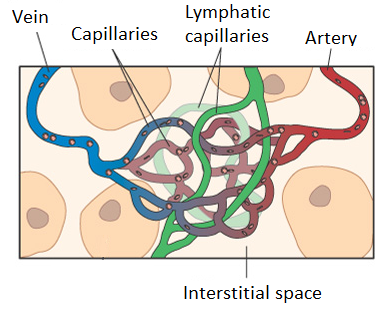Cancer is an often stigmatized, often sad, often frustrating occurrence in life. Because of this, it can sometimes be seen as a tainted or even scary topic to talk about. But, if we want to be real about it, alongside helping the people that we care about (including ourselves), then we need to face it.
When talking numbers, statistics estimate that in 2017 more than 134,000 Australians will be diagnosed with a form of cancer. To put that into perspective, that’s more than 360 people per day. Of these 360 people, more than 54% of them will be male, and 71% of them will be aged 60 and over.
To make things even scarier, it is estimated that 1 in 2 people are at risk of being diagnosed with cancer before the age of 85. And while lung cancer is set to be the leading cause of death, breast cancer in females will be the most common form.
Depending on severity, most patients are advised to undergo radiotherapy and/or dissection to combat this disease. Which more often than not leads to adverse side effects such as hair loss, various skin problems, muscle and bone weakness, and other internal damage that can ruin the immune and lymphatic systems.
This is all very dark, I know, but with such a high prevalence of cancer these days, comes a high prevalence of people receiving treatment. What this means is that there is an increased prevalence for people experiencing the adverse effects listed above, including the very topic we are discussing today: lymphoedema.
What is Lymphoedema?
When we break this word down we get lymph and oedema. After attributing ‘lymph’ to a fluid that is found in our bodies that traverses the lymphatic system, and ‘oedema’ to an accumulation of fluid, we gain the definition.
Lymphoedema is an accumulation of lymph in the body.
Typically, lymphoedema occurs in the limbs, but it can also affect the torso, the head, the neck, and the genitals.
To backpedal just a little bit, however…
The Lymphatic System

The lymphatic system is a vital and complicated network of vessels in the human body. It consists of three main parts:
1. Lymph.
2. Ducts; consisting of a right lymphatic duct which collects the lymph from the right torso, arm, and head of the body, and the thoracic duct which collects the lymph from the rest of the body.

3. And lymph nodes that act as “checkpoints” or filters in the system.
To give you a better understanding: Inside our network of blood vessels, blood moves from the arteries to the veins via tiny vessels known as capillaries.

This transfer entails the excess fluid (that is rich with nutrients, cell debris, and bacteria) being pulled into the interstitial space.
The lymphatic system does its job by mopping up this excess fluid, returning it to normal circulation, and preparing it to be utilised on its next “lap” through the network.

Damaged
As you are aware, cancer treatment damages this lymphatic system, leading to the body not coping with this excess fluid that is pulled into the interstitial space.
This comes about by the system becoming blocked, resulting in a decreased delivery of essential nutrients and oxygen to the body, alongside the removal of any invading bacteria. Following this, the lymphatic system becomes blocked thanks to the build-up of proteins, cellular debris, and bacteria, and eventually leads to severe inflammation, cell damage, and even fibrosis (thickened/scarred tissue).
Secondary Lymphoedema
This is the term given to the occurrence of a damaged lymphatic system coupled with the pooling of lymph. Whilst primary lymphoedema does exist, and is typically due to genetics, the secondary version shows up following trauma, surgery, and/or radiotherapy.
Now, I know this might be a lot to take in if you have never heard of some of these words before, but just in case you’re interested, lymphoedema arises due to three possible scenarios: (1) there are cancer cells inside the lymphatic system, (2) there are tumor cells at the lymph nodes causing obstruction, or (3) following the removal of lymph nodes, decreased filtration of harmful components causes damage.

With currently more than 20% of cancer survivors suffering from lymphoedema, it certainly is something we should pay attention to. Especially when understanding that there are various stages of this condition that can result in the condition worsening:
Stage 0 – latent (damaged lymphatic system but no accumulation yet).
Stage 1 – spontaneously reversible (pressing the skin will result in it bouncing back).
Stage 2 – spontaneously irreversible (pressing the skin results in it not compressing, but rather remaining stiff).
Stage 3 – lymphostatic elephantiasis (swelling is completely irreversible).
Lymphoedema Treatments
While treatment for lymphoedema is possible through compression bandages, massages, medication and surgery, they are not the only ways to deal with it. I mean, bandages are uncomfortable, massages are expensive, and medication and surgery is a chore that is sometimes not quite ideal for people.

So instead of all that, an alternative treatment can be good ol’ fashioned exercise. This will aid in boosting natural drainage of the lymph fluid, leading to a reduction in accumulation.
Lymphoedema Exercises
A good way to combat a lymph build-up in the limbs is to first practice some simple breathing techniques. This will enable the freeing up of the upper body, aiding in allowing the lymph to drain into the ducts much easier.
So let’s start there.
Following this, we can then perform some simple upper body exercises.
Whatever you choose to do, the important thing to focus on is always to aim for as much range as possible without pain. Move as best as you can and you will enhance fluid drainage.
I will probably return to this topic again with some simple lower body exercises. But for now, I hope this helped either you or someone you know.
Please note: This article is not a substitute for medical information or advice; it is merely information. If readers need medical advice, I strongly recommend that they consult a doctor or other appropriate medical professional/s.


